There are many venues in Malaysia that tout themselves as Eco-retreats and some of these come with a five-star price tag. My wife and I reside in Penang and two years ago we sold our house in a cookie-cutter estate and moved not far away to a rented condominium at Diamond Villa at Tanjung Bungah. This eco-location is worth at least 8 stars. This well-located 26 year old estate was solidly built with kitchens and bedrooms larger than the old-fashioned red phone boxes. We are on the 21st floor that overlooks the Strait of Malacca and backs into the lower slopes of Pearl Hill. Across the road is Abbas Road beach. The northern view is dominated by Mount Jerai on the mainland and in the night the squid boats from Thailand line the north-western horizon with their green attractant lights.
Strait of Malacca
The Strait of Malacca separates the Indonesian Island of Sumatra and Peninsular Malaysia, with Singapore included. It is 580 miles in length and the busiest waterway in the world being the main shipping channel between the Indian and Pacific Oceans. It has also been a piracy hotspot for a number of years. Pirate attacks have declined in the last 5 years but still occur. We see it’s many moods from many shades of blue on warm sunny days to thunderheads, sombre storm fronts and thunder storms at night.

 |
| Mount Jerai, across the Strait. |
Pearl Hill (Bukit Mutiara)
A beautiful, mostly forest-clad hill(s) is popular with walkers. There are a number of residences on the hill but continuous forest where troops of langurs and long-tailed macaques thrive. There are also Black-giant and plantain squirrels as well as multiple species of raptors present on the hill.
 |
| Most of the nearby forest is virtually impenetrable |
 |
| The view of Pearl Hill from our rear bedroom |
WILDLIFE
Dusky Langurs.
The forest connects with the periphery of the Diamond Villa estate on two sides and there is a continuous line of trees on the other two sides such that a local troop of Dusky Langurs can circumnavigate the complex, and they do. I have written extensively on this cute species ( 1 2 3) but will add here they are not partitioned from the estate and there are sometimes investigations of cars and facilities by members of this quiet, non-aggressive species. I am afraid there is little understanding by most resident homo sapiens. I find the species just brilliant and the orange babies are a delight. Last year (2021) the troop had 5 babies and this year, so far, there are no new additions. There were twins last year that required a foster mother. For the last two months the troop has adopted a tan-coloured, Long-tailed Macaque which I guess is the closest they can get to an orange baby. The species is listed as ‘threatened’.
 |
Dusky Langurs are rated as one of the most handsome primate species
|
Long-tailed Macaques
The species, also called Crab-eating Macaques, survive well in mangrove ecosystems but with human habitation they have moved inland and are omnivorous, raiding rubbish bins and unguarded kitchens in the process. They are infrequent visitors to the forest surrounding Diamond Villa and tend to have lightening raids and then disappear.
 |
| The Long-tailed Macaque (right) adopted by the Dusky Langur troop. |
 |
| Dominant males can be quite aggressive |
Black Giant Squirrels
These have also been covered in a previous blog of mine (here). They are a rather secretive species who build a number of nests in their domain. It is not certain as to their function with theories postulating that they are either dummies to bemuse predators or they are used as shelters for multiple moving days. The adults possibly don’t have many predators as they are a similar size to the Langurs but their young offspring will be vulnerable to eagle attack. Sightings of juveniles are very rare. The adults are also not seen often but are particularly partial to eating the fruit of the Acacia trees around the periphery of the estate.
Plantain Squirrels
Less obvious but more plentiful that the larger species Plantain squirrels scurry along branches or use internal fences as a rapid-rail system. They also build nests (dreys) that are less obvious that their larger cousins.
Bird Species
The species of the surrounding forest include; House Crows, Olive-backed and Crimson sunbirds, the ubiquitous Yellow-vented bulbuls, Pink-necked Green Pigeons, various Munia species, Asian Glossy Starlings, Crested Goshawks, Changeable Hawk-eagles, Little Spiderhunters, Crested Serpent Eagles, Racket-tailed Drongos, Plaintive Cuckoos, House Swifts, Pacific Swallows, Dollarbirds, Chestnut-headed Bee-eaters, Chestnut-breasted Malkohas. White-throated Kingfishers. Pied Fantails, Black-naped Orioles, Crested Mynas, Koels, Peaceful Doves, Scarlet-backed Flowerpeckers and Common Tailorbirds
 |
| Chestnut-headed Bee-eaters |
 |
| Pink-necked Green Pigeon (male) |
 |
| Olive-backed Sunbird (male) |
 |
| White-throated Kingfisher |
Sundry species.
Various species of butterflies flutter above the forest and night sonic soundings indicate a number of bat species are also present. My friend Nick Baker has identified; Black-bearded Tomb bats, Blyth's Glossy Horseshoe bat, Whiskered myotis and the Asiatic lesser yellow house bat to be present in the surrounds on Diamond Villa. Images of these can be seen on Nick's website seen here
 |
| Blue-Glassy Tiger |
 |
| Red Helen |
Reptiles
The most common of these are the Clouded Monitor Lizards. In the last two years a Reticulated Python and a Monocled Cobra have been removed by the appropriate authorities. There are no doubt others in the forest. Changeable lizards abound but are much harder to spot.
 |
| Reticulated Python |
 |
| Monocled Cobra |
 |
| Clouded Monitor Lizard |
 |
| Changeable Lizard |
Raptors
There are two species that fill the airways frequently…..Brahminy Kites and White-Bellied Sea Eagles.
Brahminy Kites
Somewhat smaller than the eagles this handsome species nests higher up in Pearl Hill. They are not as prolific hunters as the eagles and will also prey on carrion. These kites also perform aerial dances in the mating season. They appear to like ‘in-flight’ meals.
White-bellied Sea Eagles.
The local White-bellied Sea Eagles hunt for fish in the Strait of Malacca and fly past our windows while gaining height to fly to their nest and favourite perches. The adult pair spend a lot of the year and their energy raising young. Mating dances take place towards the end of the year. Large branches are also collected to add to the already substantial nesting stack. Soft plant material is constantly added to provide a comfortable egg platform and nursery. Mating takes place around the nesting site in early January. When eggs are laid (a maximum of two) the incubation takes six weeks. The adults take turns sitting on the eggs. When the young birds emerge they are covered in white down. Initially the female will attend the chick while the male brings in food. Usually only one chick survives and it will be fed regularly. During the feeding period we see a constant supply of fish being carried past our 21st storey windows. A variety of fish species are seen in the eagle's talons including Puffer fish, which are very toxic to humans unless prepared by master chefs. The chicks, now almost as large as the parents fledge in 90-100 days. It takes the juveniles 4 years to attain the adult colouration.
One place where the White-bellied Sea eagle resides but is rarely seen by me is on the Singaporean $10.000 bank note.
 |
| Adult Eagle with a Puffer fish |
 |
Beaches |
There are a number of beaches along the shores of the Strait. The nearest beach to Diamond Villa is the Abbas Road beach.
Smooth-coated Otters
During certain periods a local family of Smooth-coated Otters pass by, dive for fish or frolic on the sand. The family of 5 became 8 at the beginning of 2021 before losing two pups during the year. One of the favourite games of the otters is to tease dogs into chasing them into the water. In that environment the otters rule and the dog usually recognizes that when his feet get nipped.




















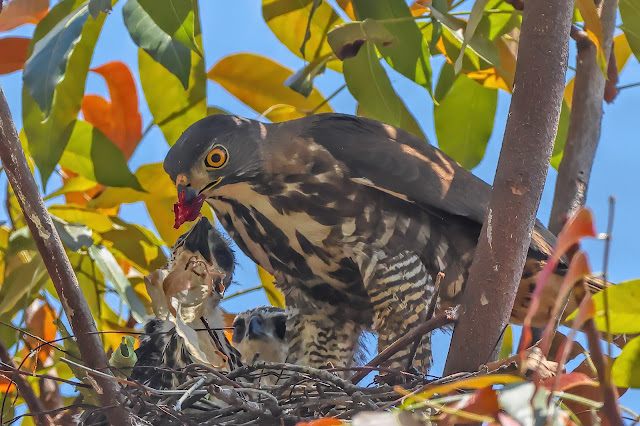





















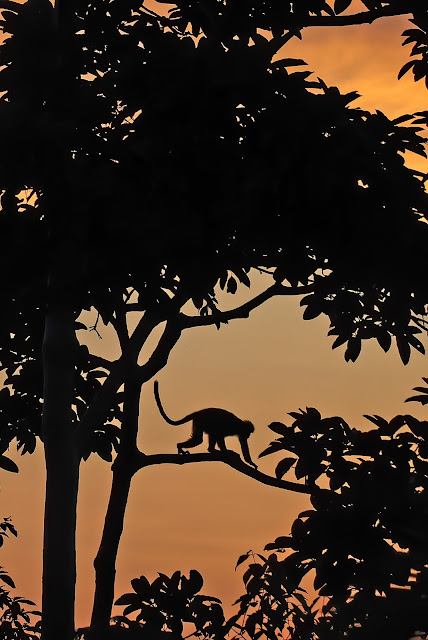





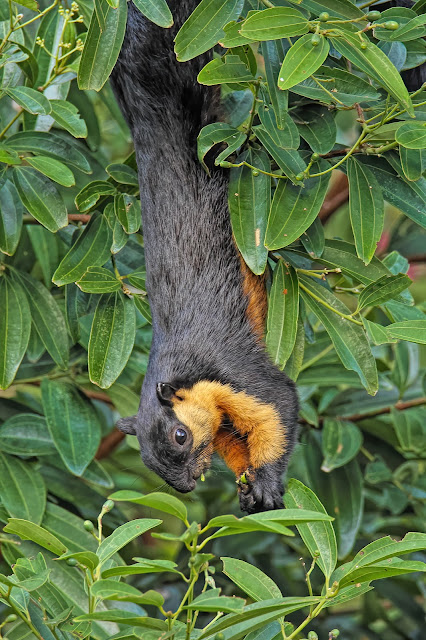







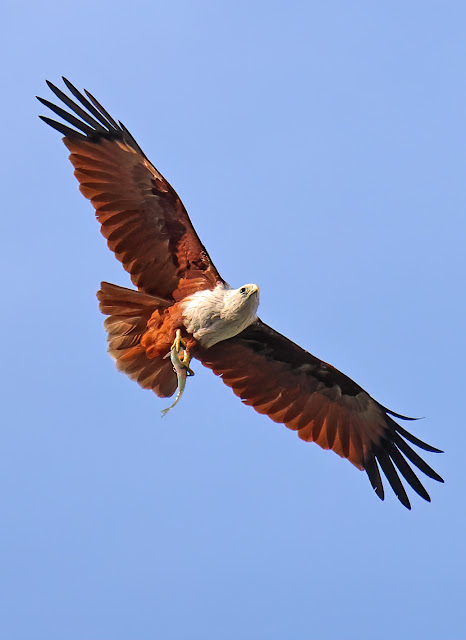







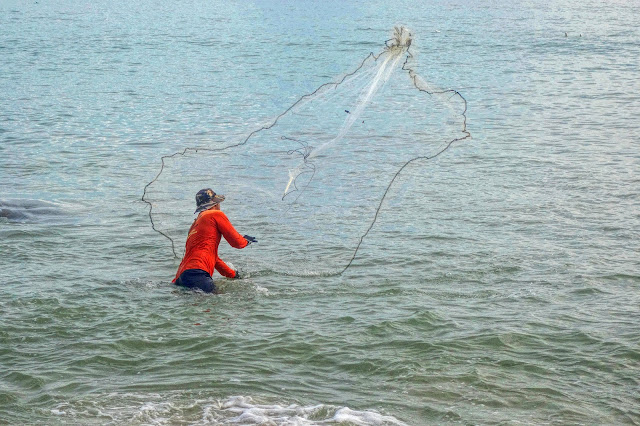








I just discovered your blog/stite today while searching for photos of the white throated king fisher. Kudos for all the photos and write ups! Inteding to read your other articles and it has been a delight to see so many Malaysian species in detailed photos 😊
ReplyDeletePardon the spelling errors. I should have checked before posting 🙏
Delete